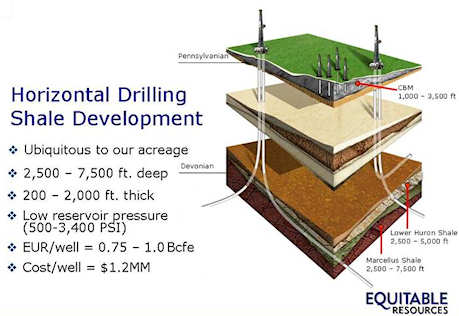WSJ: PA Data Missing Nearly 500 Gas Wells
On Monday, January 16, 2012
0
comments
 PITTSBURGH — Pennsylvania's Department of Environmental Protection undercounted the number of wells producing gas from the Marcellus Shale, frustrating industry, environmental groups, and elected officials, according to a newspaper report.
PITTSBURGH — Pennsylvania's Department of Environmental Protection undercounted the number of wells producing gas from the Marcellus Shale, frustrating industry, environmental groups, and elected officials, according to a newspaper report.The Pittsburgh Post-Gazette reported that an analysis of DEP data found 495 more wells producing gas, or ready to produce gas, than the DEP has recorded as ever being drilled, and that 182 of those wells don't even show up on the state's Marcellus Shale permit list.
The discrepancies with DEP's Marcellus Shale data have caused headaches for Senate and House staff members who have been trying to make accurate projections about how much revenue an impact fee on wells might generate for local governments, the newspaper reported Sunday.
"There has been a frustration over the last six or seven months that DEP does not have information that is always beyond reproach," said Drew Crompton, chief of staff to Senate President Pro Tem Joe Scarnati, R-Jefferson.
Crompton, who has tried to make sense of DEP's data as the Senate began crafting an impact fee bill last year, said the information problems are so befuddling that it helped delay approval of the bill. Legislators simply haven't been able to get accurate projections on the financial impact.
"Every time I think I've got something locked down, it changes," said Crompton, who discovered the same data issues that the Post-Gazette did.
The paper reported that the data problems span both the Ed Rendell and Tom Corbett administrations.
Data collection and reporting errors were "something identified through the transition period in the first few months" of Corbett's term as governor in early 2011, said DEP spokesman Kevin Sunday. "And it's one we hope to clear up and get more consistent at."
"We acknowledge that there are issues in both how the data is presented and how it's coming in," Sunday told the paper.
Vast stores of natural gas in the Marcellus Shale formation under Ohio, Pennsylvania, New York and West Virginia have set off a rush to grab leases and secure permits to drill using the extraction technique called hydraulic fracturing, or fracking.
Fracking involves the high-pressure injection of millions of gallons of water, along with sand and chemical additives, to liberate gas from the earth. Environmental advocates have complained about fracking's effects on drinking water, while the industry insists the practice is safe.
The DEP says that since 2007 there have been about 4,200 wells drilled in Pennsylvania, so the 495 missing wells is about a 12 percent error rate on data that are widely quoted by politicians, environmentalists and the industry.
"That's a significant error rate," said Bruce Stauffer, vice president of geographIT, a Lancaster-based company that provides geographic information services to industry and governments.
His company also ran into the same problem with the DEP's data when last year it began putting together Marcellus monitor, the company's interactive mapping tool that it sells to companies and governments.
"It's obvious DEP's data isn't clear and accurate," Stauffer said. "Why? I don't know. And I don't think they have the answers."
Read article from Wall Street Journal






